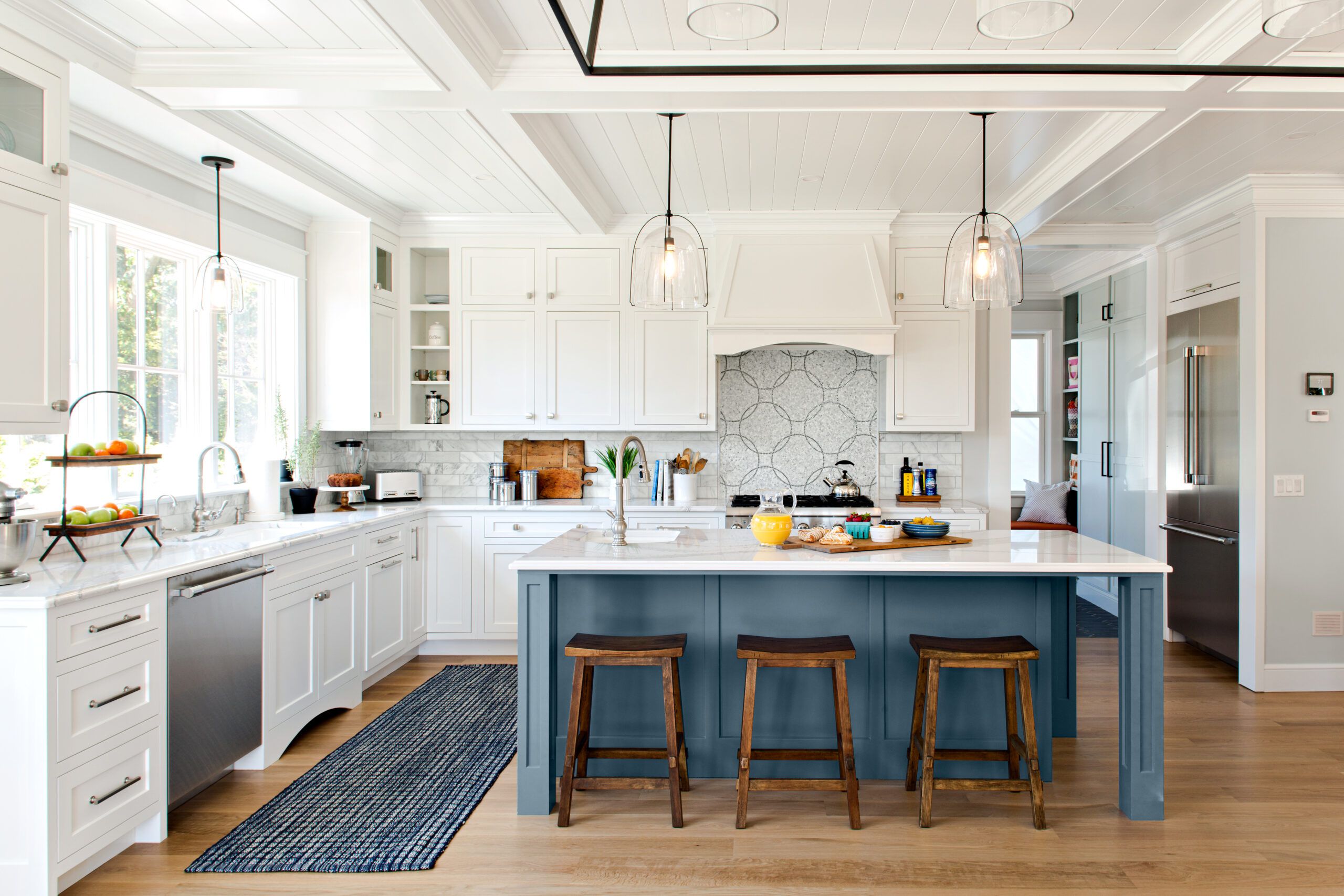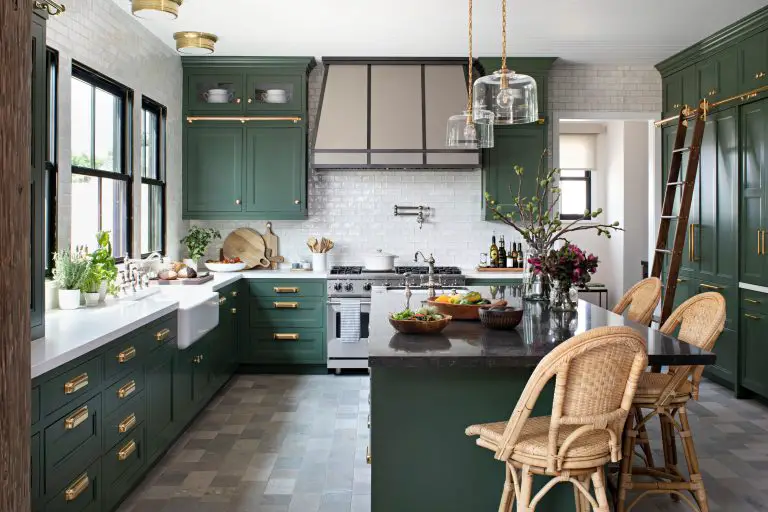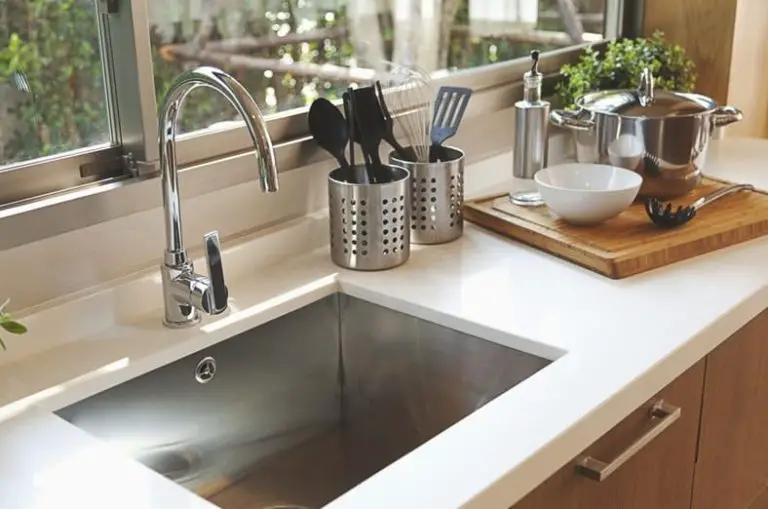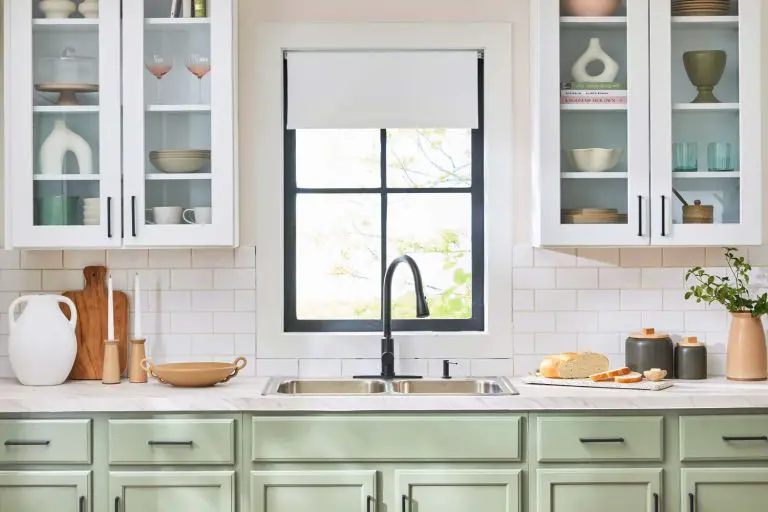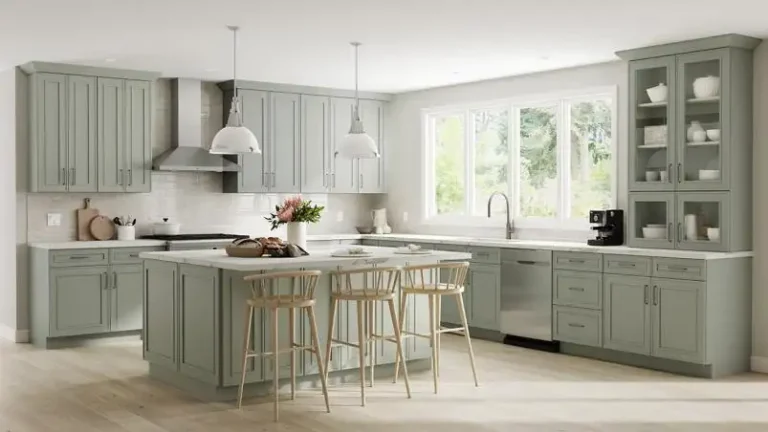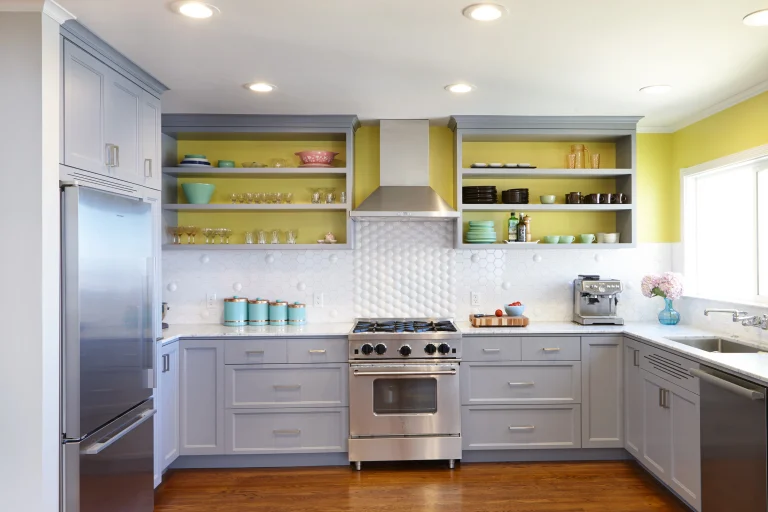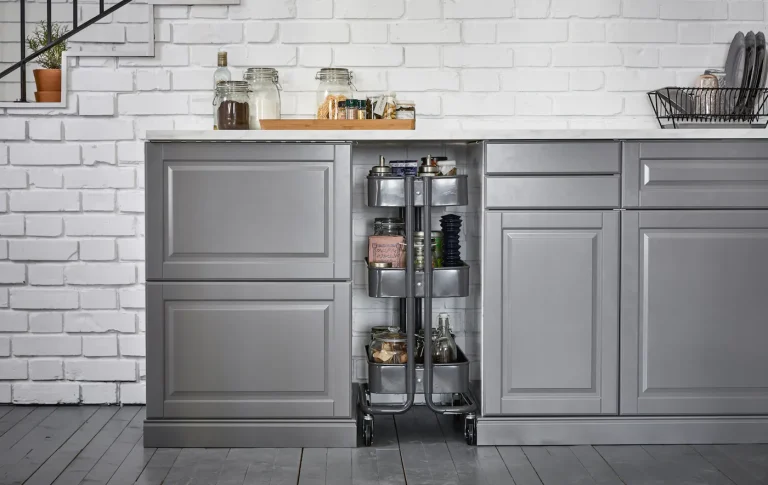How To Design An Island Kitchen?
Designing an island kitchen is a great way to add extra counter space and storage to a kitchen. It is also a great way to create a unique centerpiece in your kitchen. When designing an island kitchen, there are a few things to consider, such as the size of the kitchen, the type of appliances you want to incorporate, and the overall look and feel you are going for. By considering these factors, you can create a beautiful and functional island kitchen that will make your kitchen the envy of your friends and family.
Assessing Your Kitchen Space
If you’re looking to design an island kitchen, then assessing your kitchen space is the first step. Measuring the area and understanding the layout will help you make the most of the space available. Consider the current layout of your kitchen and think about how you can use it to create the perfect island. Consider the appliances you have in the space and whether they can be repositioned to accommodate an island. Think about where the island will need to be placed to be the most efficient. Make sure there is enough room to move around and for your work surfaces to be accessible. Once you have determined the layout of your kitchen and the size of the island, you can start looking at different design options. Consider the size of the island, the materials, and the finish. Consider different shapes and heights for your island and think about how you can incorporate storage and seating into the design. With careful planning, you can create an island kitchen that is both stylish and functional.
Choosing the Right Cabinetry
Island kitchens are a popular choice for those looking for a modern, spacious, and stylish kitchen. But to ensure that your island kitchen looks its best, it’s important to choose the right cabinetry. Cabinetry is the backbone of any kitchen, and it’s essential to select the right materials, styles and finishes to create the perfect look. Here are some tips to help you make the best choices when it comes to island kitchen cabinetry.
First, consider the size and shape of your kitchen island. This will determine the size and shape of the cabinetry you need. Measure the area carefully to make sure you get the right cabinets for your space. Additionally, think about the type of cabinetry you want. Do you prefer open shelving, drawers, or a combination of both? This will depend on your storage needs and personal preferences.
Next, think about the style of your cabinetry. Sleek, modern cabinetry can add a modern and sophisticated look to your island kitchen, while traditional wood cabinetry can add warmth and character. Also, consider the materials you want your cabinetry to be made of. Popular materials include wood, metal, and laminate.
Finally, pick your finishes. Matte or glossy finishes can add texture and depth to your cabinetry, while neutral tones like white, gray, or black can make your kitchen feel larger and more open. Additionally, you can choose hardware such as knobs, handles, and pulls to add the perfect finishing touch to your island kitchen.
By following these tips, you can design an island kitchen that looks and feels perfect for your home. With the right cabinetry, you can create a modern, spacious, and stylish kitchen that you’ll love for years to come.
Deciding on Countertops
Designing an island kitchen can be an exciting and creative task, but it can also be a daunting one. One of the most important elements of any kitchen design is the countertops. Selecting the right countertop for your island kitchen will ensure that it looks great and functions properly.
Countertops come in a variety of materials, each with its advantages and disadvantages. Granite is a popular choice for many kitchens due to its durability and attractive appearance, but it can be expensive. Quartz is another popular choice due to its easy maintenance and resistance to stains, but it can also be expensive. Laminate is a more affordable option, but it is not as durable as some other materials.
When deciding on countertops, it is important to think about the look and feel you want for your kitchen. Do you want a classic look or a more modern one? Do you want something easy to maintain or something more forgiving to spills and stains? It is also important to consider the budget you have for the project.
No matter what material you choose, it is important to make sure that the countertops are installed properly. Poorly installed countertops can lead to a kitchen that is not only unattractive but also unsafe. A good contractor will be able to advise you on the best installation method for your countertop material.
When it comes to designing an island kitchen, the countertops are one of the most important elements. Taking the time to select the right material and to have it installed properly will ensure that your kitchen will look great and function effectively.
Incorporating Island Appliances
Into Your Kitchen Design
Island kitchens are becoming increasingly popular in modern homes, offering a unique and eye-catching way to bring a touch of personality and style to your cooking space. But designing an island kitchen isn’t as simple as just picking a few appliances and putting them together. To make sure your island kitchen is as functional and attractive as possible, you need to consider the layout, materials, and appliances you’re using.
When it comes to island appliances, you should make sure to pick quality products that will match the style of your kitchen and be able to handle your cooking needs. Stovetops, sinks, microwaves, and dishwashers are all great additions to an island kitchen. You should also think about the extra counter space these appliances can provide. Islands are a great way to increase your available counter space and make food preparation easier.
When it comes to the layout of your island kitchen, it’s important to think about the flow of traffic and how you’ll be using the space. You should be sure to leave enough space between your appliances to allow for comfortable movement and to reduce the risk of accidents or spills. You should also think about how you’ll be using the appliances. For instance, if you’re planning to use the island for baking or food prep, you’ll want to make sure that your stovetop is easily accessible.
Finally, when it comes to materials, don’t forget to match the island kitchen to the rest of your kitchen design. Choose materials that are durable, easy to clean, and aesthetically pleasing. Granite, quartz, and stainless steel are all great options for island countertops.
Designing an island kitchen can be a complex task, but with a little bit of planning and consideration, you can create a beautiful and functional space that you’ll enjoy for years to come.

Selecting the Perfect Island Lighting
When creating an island kitchen, selecting the perfect lighting can make or break the overall design. Island lighting plays a crucial role in creating an inviting atmosphere and setting a welcoming tone for your guests. The right lighting can also help you achieve the desired aesthetic, and the wrong lighting can make your kitchen feel cold and uninviting. So, with that in mind, let’s explore some of the key considerations when choosing island lighting.
When it comes to island lighting, you should consider the style and design of your kitchen. The style of the lighting should complement the overall aesthetic and should be in harmony with the other design elements in your kitchen. You will also want to consider the size and shape of your island, as well as the type of bulbs you select. It’s important to choose bulbs that are energy-efficient and emit soft, warm lighting to create a cozy atmosphere in your kitchen.
Another key consideration is the placement of your island lighting. You should place the lighting in such a way that it evenly illuminates the space. Additionally, you should ensure that the lighting is placed far enough away from food preparation areas to prevent kitchen accidents.
Finally, you should think about the best materials to use for your island lighting. There are many options to choose from, including wood, glass, metal, and porcelain, so it’s important to select materials that will complement the overall design of your kitchen.
Selecting the perfect island lighting can be a daunting task, but it is worth the effort. With the right lighting, you can create a cozy and inviting atmosphere in your kitchen and ensure that your island kitchen looks its best.
Utilizing Island Seating Options
Island seating in a kitchen can add a unique touch of style and luxury to any kitchen. Whether it’s a breakfast bar, a counter-height table, or a set of bar stools, island seating offers a variety of seating options for kitchen and dining areas. Island seating can also provide extra storage and flexibility, allowing for more space to move about the kitchen. When it comes to designing an island kitchen, there are numerous island seating options available to choose from.
For a classic look, a bar-height table is a great choice. Bar-height tables are typically around 40 inches high and provide plenty of space for seating. Bar-height tables can also be easily folded out of the way when not in use, making them a great space-saving option.
Counter-height tables are also a great option for island seating. These tables are usually around 36 inches high and provide plenty of space for seating. Counter-height tables are perfect for those who prefer a casual seating area, as they are usually lower than bar-height tables.
Bar stools provide a unique seating option and are perfect for an island kitchen. Bar stools come in a variety of styles, ranging from traditional to modern, to contemporary. Bar stools provide a comfortable place to sit while eating or drinking and can be easily moved around the kitchen.
When it comes to selecting island seating for a kitchen, there are many options to consider. Choosing the right island seating option for your kitchen will depend on your needs, preferences, and budget. Island seating can add a touch of style and luxury to any kitchen, making it the perfect choice for any kitchen design.
Creating a Harmonious Color Scheme
When designing an island kitchen, one of the most important steps is to select a harmonious color scheme. A successful color palette should be cohesive, yet also bring out the best features of the kitchen. To achieve this, consider the existing kitchen design, the size of the room, and the overall style. Once these components are taken into consideration, it is time to pick the colors. Choose a neutral backdrop, such as white or gray, for the walls and cabinetry. Then, select a brighter accent color for the island and countertops. Incorporate bold hues and metallic tones to create a modern and vibrant look, or stay within the same color family for a more subtle atmosphere. Use the color wheel as a guide, as analogous colors are pleasing to the eye and create a sense of unity. Finally, remember to add texture and dimension to the kitchen with fabrics, artwork, and rugs. With a little thought and creativity, anyone can create a beautiful, island kitchen.
Adding Finishing Touches
When it comes to designing an island kitchen, the finishing touches are just as important as the larger details. The kitchen island can be a great way to add style and personality to the room, but only if done correctly. Start by selecting a countertop material that will fit the rest of the kitchen’s decor. Granite, quartz, marble, and wood are all popular options. Then, consider the island’s shape and size. Make sure it fits the space and is practical for everyday use. Finally, select the right hardware, like knobs, pulls, and fixtures, to give the island a cohesive look. With the right finishing touches, your island kitchen will be the envy of all your guests.
FAQs About the How To Design An Island Kitchen?
Q1. What type of layout should I use for my island kitchen?
A1. The best type of layout for an island kitchen is an L-shaped or U-shaped design. This will allow for efficient movement between the different areas of the kitchen while also providing ample counter and storage space.
Q2. What materials should I use for my island kitchen?
A2. For the countertops, you can use materials such as granite, quartz, or solid wood. For the cabinetry, consider materials such as hardwood, plywood, or stainless steel.
Q3. What type of lighting should I use in my island kitchen?
A3. Task lighting, such as pendant lights, is a great choice for an island kitchen. You can also use recessed lighting and under-cabinet lighting to provide additional illumination.
Conclusion
An island kitchen is a great way to add extra storage, counter space, and seating to your kitchen. With careful planning, you can design an island kitchen that is both functional and stylish. Consider the size, shape, and materials of your island. Think about the type of lighting, storage, and seating that you need. Finally, choose colors, finishes, and décor that will bring your island kitchen to life. With the right design, you can create a beautiful, functional, and inviting space that will be the heart of your home.

